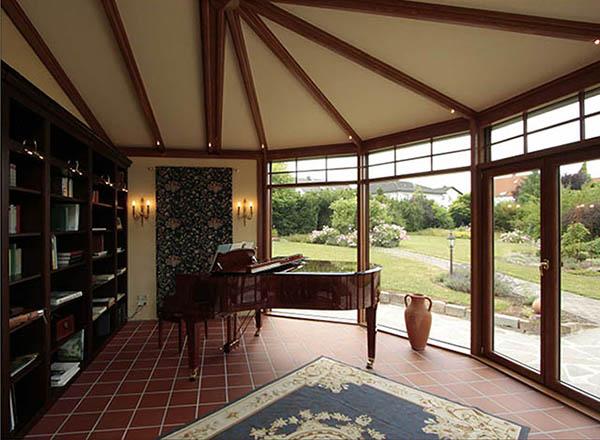Meet the winter garden

En
The Winter Garden is a fully glazed room attached to the building, which is usually used for growing a wide variety of indoor plants. They give any building a respectable and attractive appearance, indicating the good taste and wealth of the owners.
Winter gardens began to be built in Europe at the end of the 16th and beginning of the 17th centuries. They were called greenhouses because oranges and other tropical fruits were most often grown in them. Only very rich people could afford such a luxury, but today the winter garden has become a more affordable, but no less attractive decoration for country houses, cottages and even apartments. Modern technologies make it possible to combine aesthetics, functionality and style in their construction.In a country house, a winter garden is a kind of intermediate zone that harmoniously coexists with the living space and the environment. It should be sunny and spacious, so that it would be pleasant to be in the light oasis at any time of the year. The climate does not spoil us too much with sunny days, and in the winter garden you can create an atmosphere of summer warmth and comfort.The microclimate of the winter garden significantly depends on the orientation to the cardinal points. Depending on the architecture of the building and the topography of the site, it can be located on both the southern and northern sides. When planning a winter garden you must also take into account the purpose of the room, because a winter garden can be used not only for communicating with nature, but also place a studio or office in it.
The most economical option in terms of energy savings is a south-facing orientation, when the greenhouse effect is greatest. But if such a winter garden is planned to be used as a living space, you will have to take care of ventilation and shading. The costs may be considerable, but otherwise on hot days this room will be as hot as a sauna.
The winter garden, oriented to the north, serves as a climate buffer, blocking cold winds and frosts from accessing the walls of the living space. Due to this, considerable savings are achieved on heating the house. Diffused light, evenly falling on the winter garden located on the north side, creates optimal conditions for arranging a greenhouse or office.
A winter garden located on the east side is usually not subject to severe overheating, but shading and ventilation are still required.


